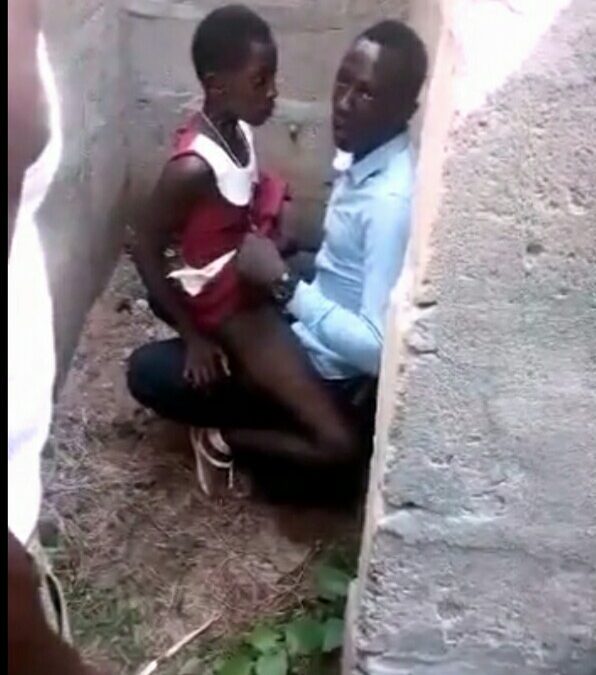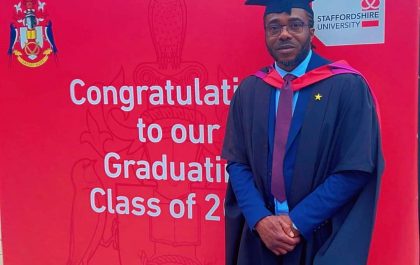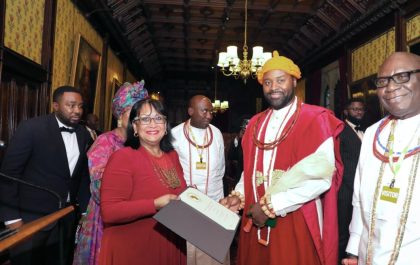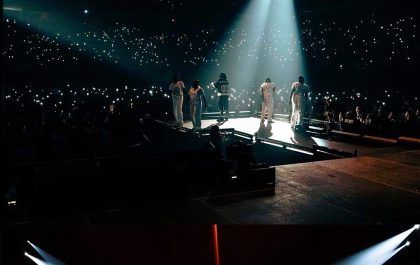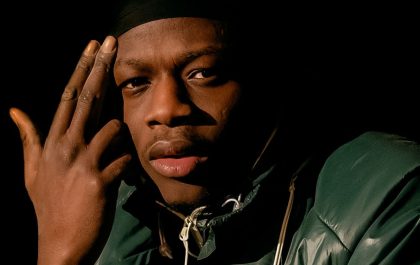-Ashley J. Moore
The rate of sexual violence in South Africa is among the highest recorded in the world. Police statistics of reported rapes as a per capita figure has been dropping in recent years, although the reasons for the drop has not been analysed and it is not known how many rapes go unreported. More women are attacked than men, and children have also been targeted, partly owing to a myth that having sex with a virgin will cure a man of HIV/AIDS. Rape victims are at high risk of contracting HIV/AIDS owing to the high prevalence of the disease in South Africa. “Corrective rape” is also perpetrated against LGBT men and women.
The South African Government has established several measures, including legislation and initiatives to prevent and combat the problem. These include the establishment of the Sexual Offences and Community Affairs Unit (SOCA) in 1999, and a network of Thuthuzela Care Centres. These are sexual violence support centres which employ a transdisciplinary approach to dealing with the aftermath of an assault, and are considered by the UN as best practice model. Sexual violence in South Africa has been widely reported in both local and international media.
child rape is most often perpetrated by a family member or an individual well-known to the child. Child rapes frequently occur in the victim’s home or in a familiar setting, most often during daylight hours. Children 12-17 years old were most likely to report being raped; preschool children (birth to 5 years old) were least likely to report being raped. Regarding victims’ HIV status, the findings show an increase in the proportion of raped children who were HIV positive at the time of the report (6.5 percent in 2002 and 10 percent in 2003). The victim’s HIV status was found to be unrelated to the rape or to demographic/background characteristics; however, HIV status was positively associated with whether the victim had been sexually active prior to the rape. This suggests that the trend in victims’ HIV status reflects high-risk sexual behavior in the context of the HIV/Aids pandemic in South Africa rather than the fact of child rapes. Trends in child-rape reporting suggest that it is increasing in South Africa. Further research is required in order to determine whether the findings from this police jurisdiction apply to other South African jurisdictions.
In apartheid South Africa, rape became not only acceptable but also legitimised. The law recognises rape only in limited instances and fails to take effective preventative or punitive action. So expected is the violence that schoolgirls sometimes assist rapists. Armstrong links rape to poverty, race and class, with poor black women being targeted most often. Rape is a weapon men use to maintain dominant male power relations, for example by denying girls an education. The solution must be to change social and cultural attitudes at the household and local levels, because it is the destruction of these units by apartheid that has allowed rape to become prolific.
South Africa has the worst known figures for gender-based violence for a country not at war. At least one in three South African women will be raped in her lifetime. The rates of sexual violence against women and children, as well as the signal failure of the criminal justice and health systems to curtail the crisis, suggest an unacknowledged gender civil war. Yet narratives about rape continue to be rewritten as stories about race, rather than gender. This stifles debate, demonises black men, hardens racial barriers, and greatly hampers both disclosure and educational efforts. As an alternative to racially-inflected explanations, I argue that contemporary sexual violence in South Africa is fuelled by justificatory narratives that are rooted in apartheid practices that legitimated violence by the dominant group against the disempowered, not only in overtly political arenas, but in social, informal and domestic spaces. In South Africa, gender rankings are maintained and women regulated through rape, the most intimate form of violence. Thus, in post-apartheid, democratic South Africa, sexual violence has become a socially endorsed punitive project for maintaining patriarchal order. Men use rape to inscribe subordinate status on to an intimately known ‘Other’ – women. This is generally and globally true of rape, but in the case of South Africa, such activities draw on apartheid practices of control that have permeated all sectors of society.
Types Of Rape
Violence against women
The South African government reports that one of these reasons is the culture of patriarchy in South Africa. Its report states that patriarchy is firmly rooted in black and white culture and fighting it is seen as attempting to destroy South African tradition or South African ideals.
The danger from rape and sexual assault is compounded because of the prevalence of HIV/AIDS in South African townships. A woman being raped over the age of 25 has a one in four chance that her attacker is HIV positive and more women than men are affected from HIV/AIDS. The perpetrators of rape in South Africa tend to be men known to the victim. It is reported that a husband or boyfriend kills a woman every six hours in South Africa. Many men and women say that rape cannot occur in relationships; however, one in four women reported having been abused by an intimate partner. In 1993 South Africa outlawed marital rape. In September 2019, President Ramaphosa responded to a surge in violence against women by calling for the passage of laws making rape punishable by death and called an emergency session of the South African Parliament.
Violence against infants and children
South Africa has some of the highest incidences of child and infant rape in the world. The Tears Foundation and the MRC stated 50% of South Africa’s children will be abused before the age of 18. The MRC study stated that, in 2009, 15% were under 12 years old. In 2017, the police reported that 9% of reported rape are those of nine years old or younger with agencies reporting an increase throughout the country. Although there are varying numbers on the number of reported rapes of children, one report states that in 2000, 21,538 rapes and attempted rapes of children under the age of 18 were reported and another from 2001 states that there were 24,892 rapes. Child welfare groups believe that the number of unreported incidents could be up to 10 times that number. The largest increase in attacks was against children under seven. A trade union report said a child was being raped in South Africa every three minutes. Some cite a 400% increase in sexual violence against children in the decade preceding 2002 and that it may still be on the rise. A third of the cases are committed by a family member or close relative.
A number of high-profile infant rapes appeared since 2001 (including the fact that they required extensive reconstructive surgery to rebuild urinary, genital, abdominal, or tracheal systems). In October 2001, a nine-month-old girl named Tshepang was raped by an HIV-positive man and had to undergo extensive reconstructive surgery in Cape Town. In February 2002, an eight-month-old infant was reportedly gang raped by four men. One has been charged. The infant has required extensive reconstructive surgery. The 8-month-old infant’s injuries were so extensive, increased attention on prosecution has occurred.
A significant contributing factor for the escalation in child abuse is the widespread myth in HIV ravaged South Africa that having sex with a virgin will cure a man of AIDS. This virgin cleansing myth exists in Zambia, Zimbabwe and Nigeria. The child abusers are often relatives of their victims and are at times their fathers or providers.
Corrective rape
Lesbians in certain parts of South Africa also face a dangerous environment. Raping lesbians (a practice referred to as corrective rape) is believed to convert them to heterosexuality. The South African government reported to CEDAW that lesbians and gays are discriminated against in many spheres. The government has been accused of condoning the practice for fear of not appearing “macho”.
One notable case of this was the gang-rape and murder of Eudy Simelane, a member of the South African football team and LGBT-rights activist. Thirty-one lesbians have died from these attacks in the last 10 years and more than ten lesbians per week are raped or gang-raped in Cape Town alone.
Corrective rape is also perpetrated against gay men. A 2003 study conducted by Out LGBT Well-Being (Out) and the University of South Africa Centre for Applied Psychology (UCAP) discovered that the percentage of black gay men who said they have experienced corrective rape matched that of the black lesbians who partook in the study. Stigmatization of male victims was said to be the cause of low reporting rates for corrective gay rape.
Violence against men
About 3.5% of men have been forced to have sex with other men in a 2009 Medical Research Council survey. About 19.4% of all adult victims of sexual assault in South Africa in 2012 were male. Another group’s survey estimates that one in five adult males become victims of sexual offences, and this figure could be much higher as a male is 10 times less likely to report a sexual violation than a woman. There are very few support networks for male victims of rape in the country, which makes it difficult for men to report being raped.
Perpetrators Of Rape
In 2014 and 2015, a Western Cape study estimated that 15% of men had raped a woman who was not their partner. A Gauteng study conducted in 2010 revealed that 37.4% of men admitted to raping a woman. More than 25% of a sample of 1,738 South African men from the KwaZulu-Natal and Eastern Cape Provinces admitted to raping someone when anonymously questioned in 2009; of these, nearly half said they had raped more than one person, according to a non-peer reviewed policy brief issued by the Medical Research Council (MRC). Several news publications wrongly extrapolated these results to the rest of the South African population, giving reported rape prevalence several times higher in the two provinces in question. Nearly three out of four men who admitted rape stated they had first forced a woman or girl into sex before the men were the age of 20, and nearly one in ten admitted to doing so before the age of 10.
The Medical Research Council states, “Many forms of sexual violence, particularly sexual harassment and forms of sexual coercion that do not involve physical force are widely viewed as normal male behaviour.” It also said practices such as gang rape were common because they were considered a form of male bonding. Market Research Africa, a Johannesburg-based market research agency, reported in 1994 that 76% of men felt that women had a right to say no to sex, one third thought that women could not decide for themselves on abortion, and 10% condoned a man beating a woman or his wife.
Children and adolescents
Among children, a 2007 survey by CIET found 60% of both boys and girls, aged 10 to 19 years old, thought it was not violent to force sex upon someone they knew, while around 11% of boys and 4% of girls admitted to forcing someone else to have sex with them. The study also found that 12.7% of the students believed in the virgin cleansing myth.
In a related survey conducted among 1,500 school children in the Johannesburg township of Soweto, a quarter of all the boys interviewed said that ‘jackrolling’, a term for gang rape, was fun. Furthermore, more than half the interviewees insisted that when a girl says no to sex she really means yes. It is also noteworthy that those in this study were school children as age is significantly associated with rape. Men from ages 20–40 are more likely to have raped younger or older men.
Teachers
Another issue with sexual violence against minors in South Africa is the sexual abuse and harassment that is reported to occur in schools by teachers and other students. According to the Human Rights Watch, girls from all levels of society and ethnic groups have been subjected to sexual violence at school in bathrooms, empty classrooms, dormitories, and more. Police, prosecutors, and social workers have also complained that many incidents of sexual violence in schools are not reported to them because schools often prefer to deal with it internally, thus hindering justice against the perpetrators. The danger of sexual violence in schools has created a barrier for girls to seek education. HRW also reported that South African girls’ school performance suffers after an incident of sexual violence
Related posts
Global | Didi Angaye Earns A Distinction Award, Another Feather To The Cap
On a bright sunny day, in the month of July, 2024, the prestigious Staffordshire University located in the West Midlands of England organised its Award giving and Graduation ceremony to honour graduates of various educational programmes and courses which it offers. Didi Timipah Angaye,…
Olu Of Warri Bags Award In UK, Wife Advocates Return To Cultural Values
The Olu of Warri, Ogiame Atuwatse III, has received the Leadership and Community Development award at the 14th African Achievers Awards (AAA), which took place at the Parliament House, United Kingdom. The award was presented by a member of the House of Lords, London, Rt…
Brit Awards | Asake, Burna Boy And Other ‘New Cats’ Get Nominations
Nigerian singers Burna Boy, Asake, and Rema have been nominated for the 2024 Brit Awards. The nomination list for the annual music awards show was released on Wednesday 25, January 2024. Burna Boy and Asake made the ‘Best International Artiste’ category, while ‘Calm…
Brit Awards 2024 | The Full List Of Artist(e)s
This year’s Brits nominees have been revealed ahead of the ceremony in London in March. Dua Lipa is the first star confirmed to perform at the event – but how many awards is she up for? Musicians including Raye, Central Cee, J Hus and Blur are also…
Despite Increased Transfer Volume And Institutional Adoption, Bitcoin Stays Below $60K
Bitcoin’s price hovers around $59K as increased transfer volume indicates a stable demand among investors. CryptoQuant data indicates buyers are absorbing the panic selling pressure around the $57K price level. Bitwise’s latest report suggests that institutional investors are still buying Bitcoin despite the recent price…
Traders Focus On Meme Coins As Bitcoin, Ethereum And XRP Erase Recent Gains
Bitcoin, Ethereum and XRP dip under key support levels at $60,000, $2,600 and $0.60 respectively. Tron ecosystem’s meme launchpad SunPump generates over $1.1 million in revenue within twelve days of its launch. Tron network daily revenue reached a record high of $26.83 million on Tuesday,…
Top 10 Cryptocurrencies To Invest in January 2024
-Michael Adams From Bitcoin and Ethereum to Dogecoin and Tether, there are thousands of different cryptocurrencies, making it overwhelming when you’re first getting started in the world of crypto. To help you get your bearings, these are the top 10 cryptocurrencies based on their market…
The Risk And Reward Of ChatGPT In Cybersecurity
Juan is an experienced CTO with a demonstrated history of working in the computer and network security industry. He is an information technology professional skilled in SAP and Oracle applications, computer forensics, vulnerabilities research, IPS/IDS and information security. Unless you’ve been on a retreat in…


